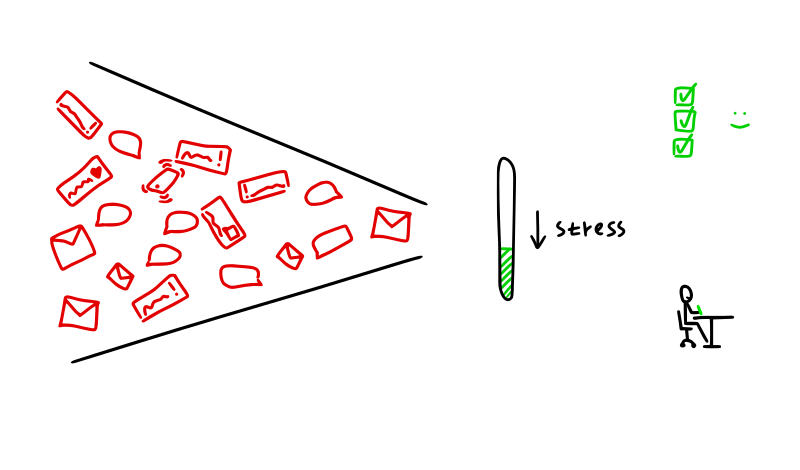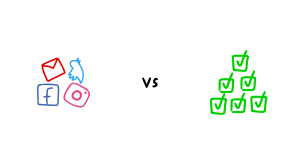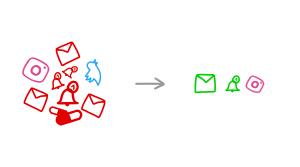How to stop procrastinating by using the Fogg Behavior Model - Part 2.
In the previous post, we covered the B J Fogg model of behavior:
Behavior = Motivation * Ability * Prompt
(Side note: prompt is also known as trigger.)
Let's take a look at how it might apply in the case of distractions since digital distractions are the most frequent contributor to procrastination.
Phone - checking messages or notifications
Motivation: Is there anything new? Did someone like my post?
Ability (what you need to do): reach for your phone and tap
Prompt: notification or finding yourself bored, wherever you can access your phone
All 3 are there - you have the urge, you have the ability, you have the prompt. If you have a phone within your reach, it's extremely likely you'll get distracted by it.
Browser - checking websites
Motivation: Anything new or interesting? Likes? Emails?
Ability: open new tab, press a key or click
Prompt: notifications, seeing (1), feeling bored
Again, easy, simple, straightforward. Straight into distraction.
And now, what about work?
Work - creating a presentation
Motivation: I want to give a great presentation and keep my job, I don't want to fail
Ability: research the topic, assemble data, find images, create slides that are good, rehearse
Prompt: when I feel like it and can work (at your desk), when I look at my to-do list, or just before the deadline
Now if you compare the examples, what do you see?
1) Arguably, there's motivation to do either, though in the case of the work presentation, the stakes are higher. That increases stress.
2) It's much simpler to get distracted than to do work. This is a crucial point. If you have a choice between working and getting distracted, on the ability scale, distraction is much easier.
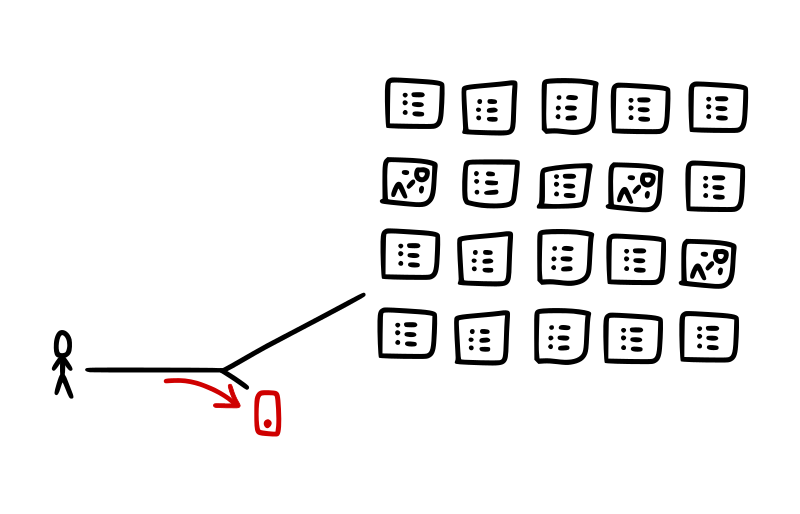
3) The prompts for distraction are much more frequent.

This is another important point. Notifications and boredom are far more frequent than feeling like creating a presentation or the deadline (happens only once, at the end)
In short, when you have your phone on your desk or use the browser in the default way, it's almost inevitable that you'll get distracted because of how simple it is compared to work and how frequently you're prompted to do it.
Your phone within the reach of your hand is making distractions too simple. Having it in your field of vision is a visual cue, a prompt. Hearing any sound it makes is another prompt.
The new tab button in the browser is also too easy to press, and is available always as a visual prompt.
In contrast, there are no default notifications for non-urgent work and the only visual prompt happens when you glance at your to-do list, which may be often or almost never, and with varying degrees of enthusiasm about the work.
Based on this short scenario analysis, here's a couple strategies.
Make distractions hard to access
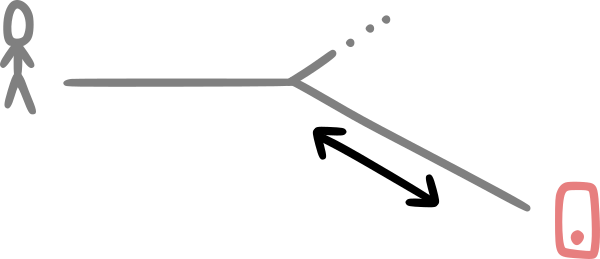
If you reduce your ability to access distractions, you'll access them less.
- If you take a walk without your phone, you won't be able to check it.
- If you leave your phone in another room when you're working, you won't be able to simply reach for it.
- If you block distractions with our extension, you won't be able to access them.
The harder you make it to get distracted, the less distracted you'll be.
Remove prompts to distraction or reduce their frequency

Hiding your phone from sight is removing a visual prompt. You can also do other things to remove the cues to distraction.
- Turn off notification or enable Do Not Disturb/Airplane mode.
- When on your computer, go fullscreen to not see icons or the new tab button. The fewer visual cues to distractions, the better.
Whatever prompts you to get distracted, remove it if you can or reduce the frequency of the prompts to acceptable levels.
Make work simpler
B J Fogg uses the terms ability and simplicity interchangeably because the simpler something is to do, the more we're able to do it.
B J Fogg lists 5 top factors that make a behavior easier or harder:
- Time
- Money
- Physical effort
- Mental effort
- Routine (the less frequently you do something, the harder it is)
How does this apply?
Big task: creating a 20 minute presentation

- requires a lot of time (several hour long sessions)
- requires a lot of brain cycles (figuring out the details, drafting, analyzing, synthesizing, polishing)
End result: low simplicity (high complexity) → you're less likely to do it.
Small task: read 3 articles for the presentation
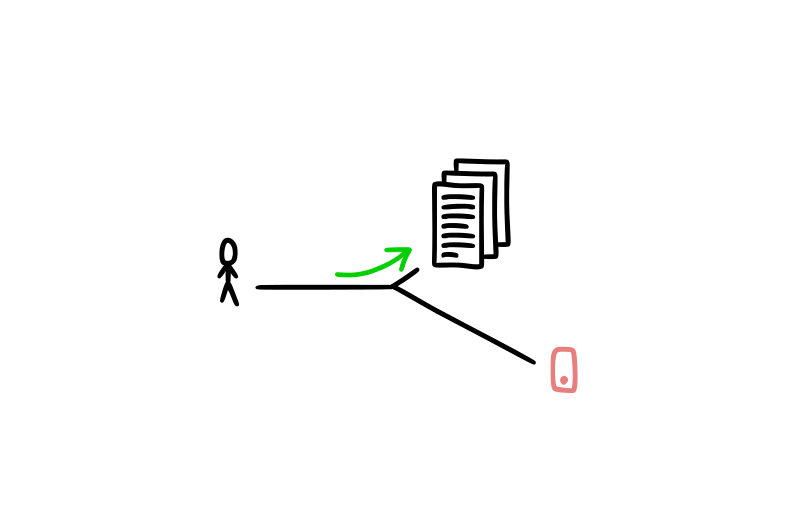
- not too many brain cycles (just reading)
- not too much time (15-60 minutes)
End result: high simplicity → you're likely to do it (even if you don't feel like it).
Once you start, it's easier to continue. Smaller tasks build momentum and confidence.
Every large project can be broken into simpler, smaller tasks. It just takes a bit of effort to do it.
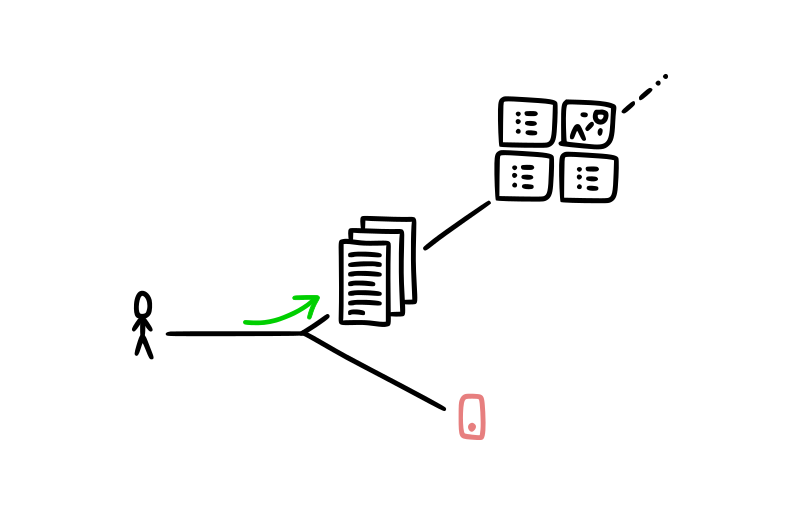
Here's one method to break work down into small tasks (for when you have a deadline):
Go back from the deadline to today, thinking through what you'll need to have done by when. If you think this is relevant for you, take a piece of paper and a pen, grab a calendar and go back to today, day by day, writing out any notes on what needs to be accomplished.
Increase frequency of work prompts

This will happen almost automatically if you reduce your prompts to distraction and access to it.
If you have distracting apps uninstalled from your phone, your phone in another room, and distractions on your computer blocked, you'll find yourself bored. You'll have moments of "What do I do now?"
But instead choosing to get distracted in those moments (the default response), choose to do anything else. Like work.
Even mild work (reading, reviewing, short emails) is better than checking Twitter, or Reddit, or YouTube, because it will help you feel accomplishment and pride, which will boost your mood, which is scientifically proven to improve performance even more.
You can also add more specific prompts:
- A list of 1-4 tasks to get done today right in front of you (visual prompt)
- A reminder on your phone or computer (visual + audible prompt)
- Having someone come by
By default, we're not prompted often to do non-urgent important work. So, create the prompts.
Take a moment to figure out what you need to get done today and write it on a post-it note right in front of you. Every time you sit down at your desk, you'll see what you need to focus on.
For longer timeframes, use the calendar or phone reminders. You can use a digital calendar, or create an analog version (on a piece of paper or a whiteboard) that you look at every day when you walk by.
So here's the summary:
- Make distractions hard to access
- Remove or reduce prompts to distraction
- Make work simpler (to increase ability)
- Increase frequency of work prompts
These are the simple principles that you can apply in your life to be less distracted.
How can you use one or two of them right now to improve your productivity?
